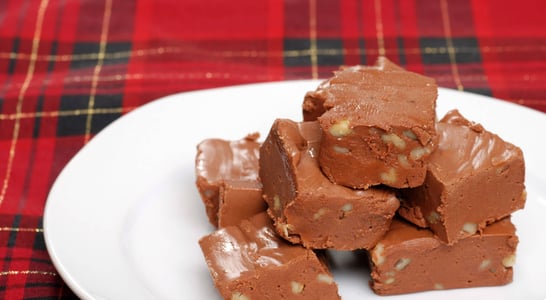
National Limerick Day
Read or write your own five-line limericks to enjoy the humorous, simple formula that has entertained children and adults alike for many generations.
There was a young fellow named Lear,
Who penned Limericks, or so we hear.
So now we converse
In humorous verse
On Limerick Day every year!
The distinctive sound of a limerick which uses a special metre and AABBA rhyming scheme are ideal for the creation of nonsense verses, which is why many limericks tend to have a childish or even obscene tone to them, ensuring that they pack a humorous punch.
How to Celebrate National Limerick Day
Learn About Limericks
A great way to celebrate this monumental day from English literature is to spend some time learning more about limericks and poetry in general. A fantastic way to mark this incredible day dedicated to Edward Lear and his incredible works, is to sit down and write a few limericks of your own.
Share with Others
You can also opt to share your limerick creations onto social media as part of the celebrations to mark National Limerick Day. Join in the community of limerick lovers on social media and learn more about limericks and poetry in general.
Get the Kids Involved
National Limerick Day is the ideal opportunity to encourage children to become more interested in poetry, as it brings humor and fun to a topic that many children can often find dull and boring and struggle to understand.
The style of a limerick can work as a simple introduction to poetry to children and young people, with National Limerick Day helping schools to teach children how to create poetry and to learn to enjoy reading poetry.
Many schools celebrate National Limerick Day with workshops and classes focused on poetry and limerick writing, as well as offering students the opportunity to experience performances of limericks by professional poets.
Acquire a Limerick Book
Did you know that many people choose to celebrate National Limerick Day by purchasing a copy of Edward Lear’s famous 1846 opus ‘A Book of Nonsense’ and then spending the day reading, reciting and having fun with all of his incredible limericks?
Many people choose to perform these hilarious limericks to friends, family, and even colleagues to mark and celebrate National Limerick Day in style.
Write a Limerick
For anyone who is passionate about the written word and loves to spend time creating their own pieces of unique artistic works, National Limerick Day is an ideal excuse to put pen to paper and create a number of new, humorous pieces of content, perfect for sharing with friends and family.
If you need limerick writing inspiration, there are plenty of online resources that can help to make creating limericks somewhat easier and more enjoyable, and are perfect for utilizing as part of your National Limerick Day celebrations this year.
There are lots of examples online that you can find to work from, as well as plenty of sites that show you exactly how to draft a limerick that is both funny and wonderfully obscene.
This year spend National Limerick Day getting creative, making up your own fun limericks that reflect your life and experiences!
History of National Limerick Day
Each year on this day, National Limerick Day celebrates the birthday of famous English artist, illustrator, and much-loved author and poet, Edward Lear.
This multifaceted artist was born on May 12, 1812 and lived until January 29, 1888. Lear lived a long and vibrant life, making a significant contribution to the art world. National Limerick Day celebrates the incredible works he created during his life, including his many whimsical limericks. Edward Lear is primarily famed for his literary artistry in poetry, prose, and fittingly as the day is named, limericks.
National Limerick Day focuses on celebrating limerick poems, which were popularized by Edward Lear’s famous book of poems named ‘Book of Nonsense’ which was published in 1846, when he was 34-years-old.
What is National Limerick Day All About?
This day is all about appreciating beautifully written English poetry from one of the world’s most notable poets. It’s also about bringing a little ‘silliness’ into your life through the written word. National Limerick Day offers the ideal opportunity to bring a little literary humor to your life through the art of limerick writing.
Limericks were named after the Irish city of Limerick, and although limericks were not in fact created by Edward Lear, it was he who popularized them, bringing the love of limericks to the masses. Limericks could potentially date back as far as 500 years, however it is currently unknown when the very first limerick was created, and whether it was created purposely or by a happy accident.
What Is a Limerick?
A limerick is a special type of poem that is short, packed full of humor, and is made up of ‘nonsense’; a limerick is meant to be funny.
A limerick is made up of five lines. The first two of the five lines must rhyme with the fifth line, whilst the third and fourth lines of the limerick should rhyme together. Another unique feature regarding a limerick is that it should have a particular rhythm – this rhythm is described as being an ‘anapestic trimeter’.
Limericks are renowned for the humor and fun they bring to traditional poetry; incorporating a number of interesting and nonsensical themes. A limerick can be whatever the writer wants it to be; the point of writing a limerick is to incorporate humor into the piece and have a little fun with words.
Limericks are meant to be instantly recognizable from the rhythm that the verses create, limericks are carefully constructed to create humor and bring laughter.
One of Edward Lear’s most famous Limericks is ‘There was a Young Lady’ – the limerick goes like this:
‘There was a Young Lady whose chin
Resembled the point of a pin;
So she had it made sharp, and
purchased a harp,
And played several tunes with her chin.’
Or, how about this one?
‘There was an Old Man with a beard,
Who said, ‘It is just as I feared!
Two Owls and a Hen,
Four Larks and a Wren,
Have all built their nests in my beard!’’
National Limerick Day FAQs
Did limericks exist before Edward Lear’s time?
Yes, limericks predate Edward Lear. The earliest recorded limerick is attributed to Saint Thomas Aquinas (1225–1274).
His Latin prayer follows the limerick’s distinct AABBA rhyme scheme. This suggests that the limerick form has been in use since at least the 13th century.
How did limericks get their name?
The origin of the term “limerick” is debated. One theory links it to an 18th-century Irish soldiers’ song with the chorus “Will you come up to Limerick?” This refrain may have inspired the naming of the poetic form.
Are limericks always humorous?
While limericks are often humorous or whimsical, they can also address serious or nonsensical themes. Their defining feature is the AABBA rhyme scheme and rhythmic pattern, not necessarily their content.
How do different cultures celebrate Limerick Day?
Limerick Day is primarily celebrated in English-speaking countries. Enthusiasts share and compose limericks, host writing competitions, and attend poetry readings.
The day honors Edward Lear’s contribution to popularizing this poetic form.
Is there a connection between limericks and the city of Limerick, Ireland?
The connection is unclear. Some suggest the name derives from the Irish city, possibly linked to songs sung in Limerick. However, definitive evidence is lacking.
What is the typical subject matter of traditional limericks?
Traditional limericks often feature humorous, absurd, or even risqué themes. They frequently begin with a person from a specific place and describe an amusing or outlandish situation involving them.
Did Shakespeare ever write limericks?
Yes, Shakespeare included limerick-like verses in his plays. For example, in “Othello,” the character Iago sings a song with a rhythm and rhyme scheme reminiscent of limericks.
Are there any famous limerick competitions?
Yes, limerick competitions have been popular, especially in the 20th century. Magazines and businesses often hosted contests, challenging participants to create witty and humorous limericks.
Can limericks be used for educational purposes?
Absolutely. Limericks can help teach rhyme schemes, rhythm, and creative writing. Their concise structure makes them useful tools for engaging students in poetry and language arts.
Are there any notable variations of the limerick form?
While the AABBA structure is standard, some poets experiment with variations.
For instance, Edward Lear’s limericks sometimes deviate from the strict syllable count or rhyme, showcasing creative flexibility within the form.
Also on ...
View all holidaysNational Nutty Fudge Day
Try making your own fudge, or take a fun trip with friends or family to a nearby tourist town to try out any number of flavor and flavor combinations.
National Fibromyalgia Awareness Day
Learn and spread awareness about the difficult disease known as fibromyalgia, which affects many men and women around the world and as of yet has no cure.
International PMO Day
Delve into the integral role of PMOs, orchestrating seamless strategies, ensuring project success, and fostering organizational resilience.
We think you may also like...
National Poetry Day
Stringing words like pearls, creating a dance of emotions and thoughts on paper, poetry weaves magic that speaks to the heart.
Independent Bookstore Day
Independent bookstores are struggling more and more with competition like Amazon or big chains like Barnes & Noble, so make a point to support your local shop.








